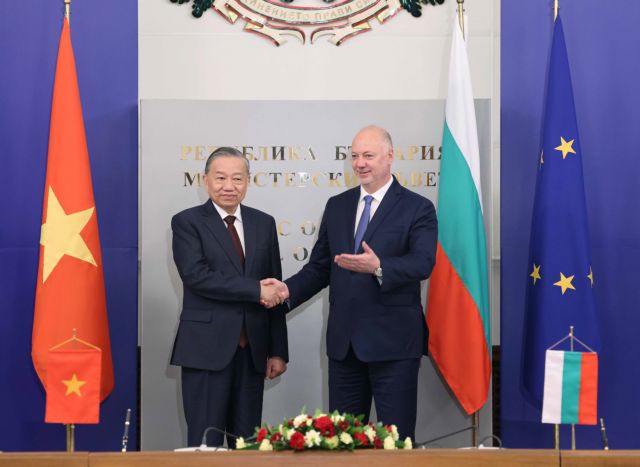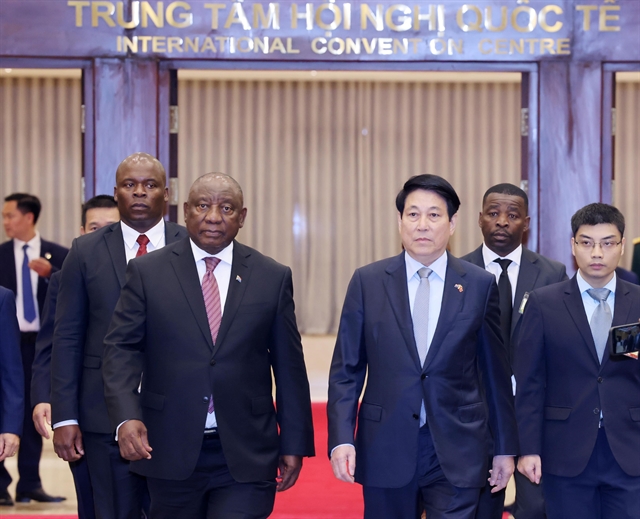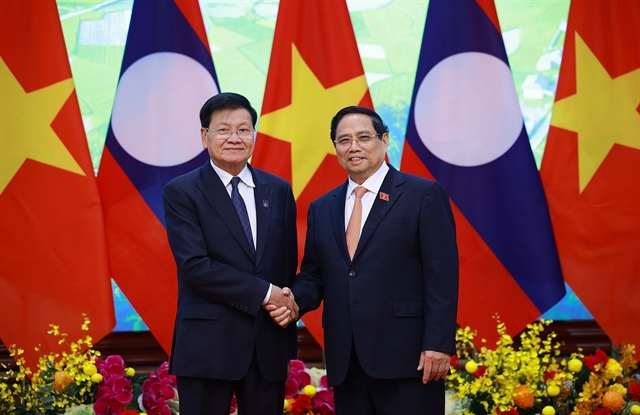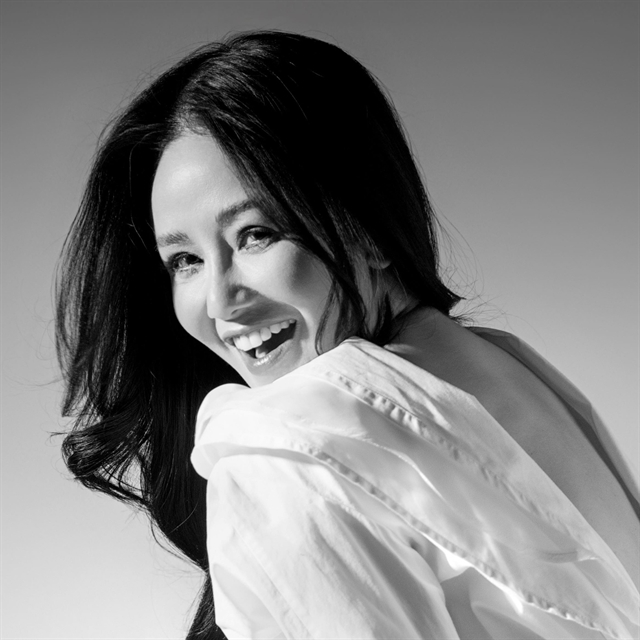 Inner Sanctum
Inner Sanctum
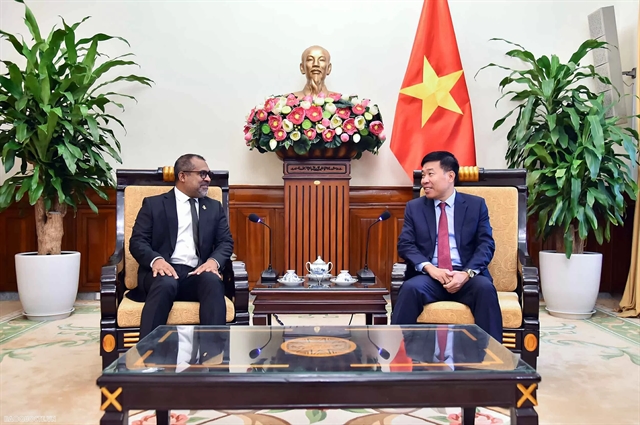
Hứa Thanh Bình is the deputy director of the HCM City Museum of Fine Arts. He sits down and talks with An Vũ about his passion for art, how he runs the museum and his plans for the future of the museum.
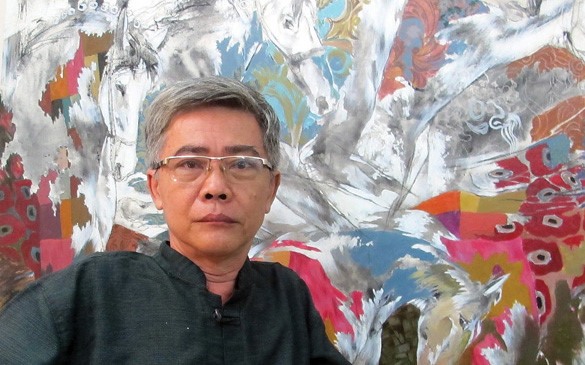 |
Have passion and self-respect in everything you do
Hứa Thanh Bình is the deputy director of the HCM City Museum of Fine Arts. He was awarded the Sài Gòn Tourist gold medal in 1992, the Philips Morris Asean Art Award in Thailand in 1996, along with other awards from HCM City’s Việt Nam Fine Arts Association from 1999 to 2015. His paintings are on display in museums including the Việt Nam Fine Arts Museum, the HCM City Fine Arts Museum, the Đà Nẵng Fine Arts Museum and the HCM City Southern Women’s Museum.
He sits down and talks with An Vũ about his passion for art, how he runs the museum and his plans for the future of the museum.
Inner Sanctum: If you were not an artist and the deputy director of the museum, do you think you would be doing something else?
I studied intermediate arts prior to 1975, and after that I finished college, which lasted for 13 years. I became a state official, and an art designer for the HCM City Museum from 1978 to 2000, then a lecturer and chief of the fine arts faculty at the College of Culture and Arts of HCM City from 2000 to 2010. Eventually, I became deputy director of the HCM City Fine Arts Museum and have worked there for 7 years. If I wasn’t working in the arts and at the museum I really don’t know what I’d be doing.
Inner Sanctum: How do you harmonise your passion for art with daily life?
For me, whether as an artist or not, I still have to fulfil my basic life mission: working to make end meets, and having basic emotions like joy, frustration, love and hate like other people do.
Inner Sanctum: During your career, how did your style of art develop? What influenced your particular style?
My art stands between expressionism and abstractionism in the South. In some of my paintings, I use a strong and dreamy style, which reflects some elements of nature.
After many years of hardship and looking for a stable income, my art took on complex characteristics. Although on the surface, what I am painting is calm, I think it reflects some turmoil on a deeper level.
Under the surface there are passions that have been buried, dreams which never came true, as well as images of motion.
I believe there is a lot of conflict in my work, which helps me stand out from the crowd of Southern artists.
Inner Sanctum: What are your favourite materials to work with?
I would say it is still oil on canvas. For me, materials are tools and I need to understand how to apply that material in demonstrating what I want to paint.
Inner Sanctum: How do you balance your work as a manager and a painter?
There are two great passions in my life, painting and working at the museum. Painting is for myself, and the museum is for the public. Working at the museum is fulfilling my duty as a state official, so I work hard to balance the management and creativity. Making art for me is a need and a discipline, so I paint whenever I can. I think no matter what you do, you need passion and self-respect.
Inner Sanctum: Over the past few years, your work seems to be focused on horses. Have you found any new inspiration?
The horse is an animal of pride and tolerance. Out of all animals, I am most interested in the horse. Maybe it’s because it’s calm and quiet, just like my thoughts. The horse is also important in culture. In the old days, business, transportation, and trade were done by horse.
Some said I painted horse’s eyes so sadly, or that I bring a lot of sadness into my paintings. But I never felt depressed. Maybe I was sad, but if I let sorrow get the better of me, how can I continue to paint?
Inner Sanctum: How about women? There was a time when you painted beautiful and sad Vietnamese women, who seemed torn by the conflict between attraction and virtue. And now, it seems all of those qualities have been mingled, you have shown no sign of restraint in your work anymore?
Female characters in my paintings are always marked with the word fate, which is the reason I have pursued this topic for a long time. I painted Vietnamese women who worked at the city’s museum. In the photo archives, I happened to come across portraits of many different mothers. I especially liked women from the central provinces. Their faces show great suffering. Maybe it is because of the land, climate, wars, and disasters. After 20 years of painting, I stopped. I do not want to repeat the past. The story is for the present.
Inner Sanctum: In your opinion, do we have our own domestic art market?
I think we do. Recently, we have had festivals and auctions which were professionally organised. However, it has taken until now for event organisers to notice how to create a market professionally. Previously, we had galleries, art studios, exhibitions, but still feel like amateurs and beginners. The word professional is now widely understood as the artist who has to elevate himself and the market has to offer viewers who know how to enjoy art. If not, there is no chance to access the art pieces.
Inner Sanctum: How did you come up with the idea of improving the museum?
Changes at the museum are a team effort. If we want to modernise the museum, human resources is the first thing. Our country is not as well prepared as some others in the region like Singapore. At present, the museum has 20 to 30 exhibitions. In order to improve, we need storage, art studios, and renewing the art on display. VNS

